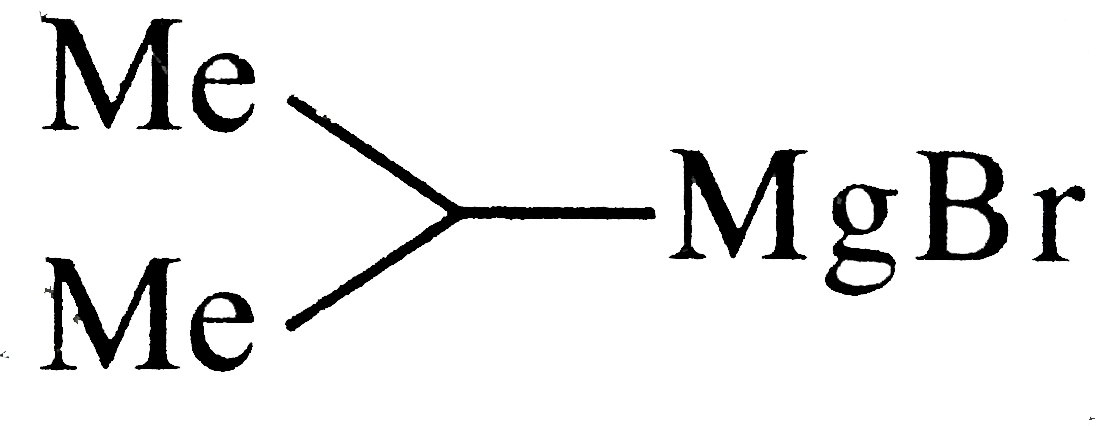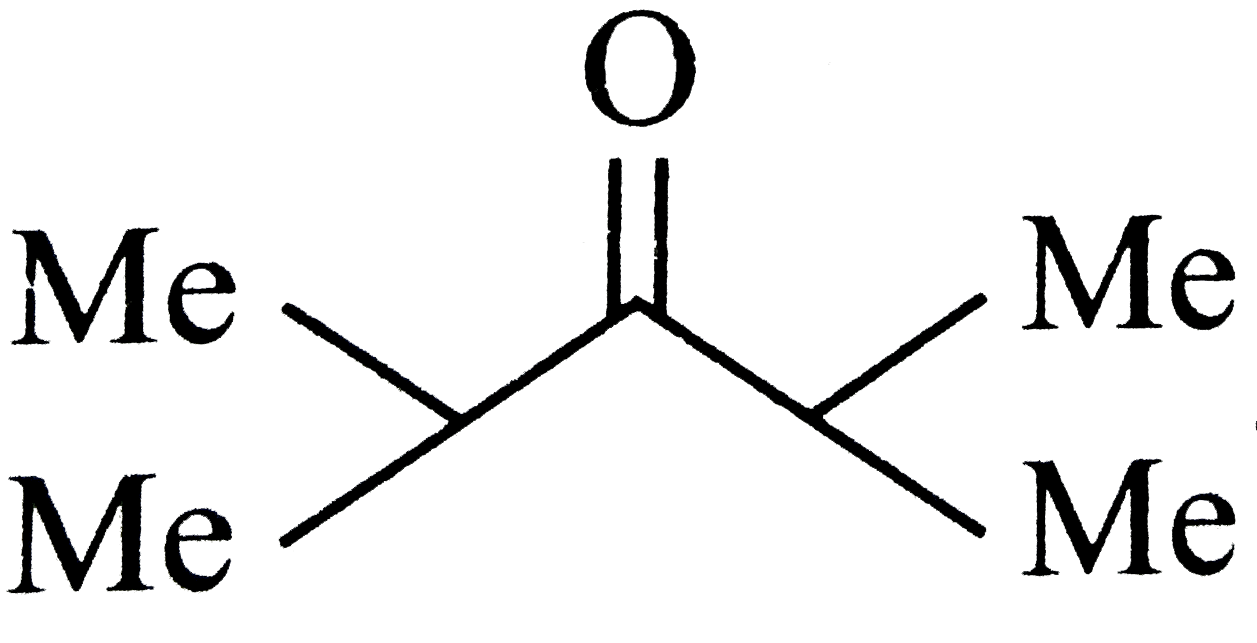1-Ethyl-2-methyl oxirane when treated with C2H5MgBr, followed by hydrolysis gives :




The correct Answer is:A
To solve the question, we need to follow the reaction steps involving 1-Ethyl-2-methyl oxirane and the Grignard reagent, ethyl magnesium bromide (C2H5MgBr), followed by hydrolysis. Here’s the step-by-step solution:
Step 1: Identify the Reactants
1-Ethyl-2-methyl oxirane is an epoxide (cyclic ether) with the following structure:
- The oxirane ring consists of three members: one oxygen atom and two carbon atoms.
- The carbon atoms are substituted with an ethyl group (C2H5) and a methyl group (CH3).
Step 2: React with Grignard Reagent
When 1-Ethyl-2-methyl oxirane is treated with ethyl magnesium bromide (C2H5MgBr), the Grignard reagent acts as a nucleophile. The nucleophilic carbon in the Grignard reagent will attack the less hindered carbon atom of the oxirane ring, leading to the opening of the epoxide ring.
Step 3: Formation of the Alkoxide Intermediate
The reaction will result in the formation of an alkoxide intermediate. The structure of the alkoxide will be:
- The ethyl group from the Grignard reagent will attach to the carbon atom that was originally bonded to the ethyl group in the oxirane.
- The remaining carbon will be attached to the methyl group.
The resulting structure will be:
- A carbon atom with an ethyl group (from Grignard) and a methyl group, and an alkoxide (O-MgBr) attached.
Step 4: Hydrolysis
The next step is hydrolysis, where the alkoxide is treated with water (or an acid). During hydrolysis:
- The alkoxide will convert to an alcohol.
- The magnesium bromide (MgBr) will react with water to form magnesium hydroxide (Mg(OH)Br).
Step 5: Final Product
After hydrolysis, the final product will be:
- The alcohol derived from the alkoxide, which will have the structure of 1-Ethyl-2-methyl ethanol (C2H5-CH(OH)-CH3).
Conclusion
The final product after treating 1-Ethyl-2-methyl oxirane with C2H5MgBr followed by hydrolysis is 1-Ethyl-2-methyl ethanol.
Answer
The answer is 1-Ethyl-2-methyl ethanol.
---
1-Ethyl-2-methyl oxirane is an epoxide (cyclic ether) with the following structure:
- The oxirane ring consists of three members: one oxygen atom and two carbon atoms.
- The carbon atoms are substituted with an ethyl group (C2H5) and a methyl group (CH3).
When 1-Ethyl-2-methyl oxirane is treated with ethyl magnesium bromide (C2H5MgBr), the Grignard reagent acts as a nucleophile. The nucleophilic carbon in the Grignard reagent will attack the less hindered carbon atom of the oxirane ring, leading to the opening of the epoxide ring.
The reaction will result in the formation of an alkoxide intermediate. The structure of the alkoxide will be:
- The ethyl group from the Grignard reagent will attach to the carbon atom that was originally bonded to the ethyl group in the oxirane.
- The remaining carbon will be attached to the methyl group.
- A carbon atom with an ethyl group (from Grignard) and a methyl group, and an alkoxide (O-MgBr) attached.
The next step is hydrolysis, where the alkoxide is treated with water (or an acid). During hydrolysis:
- The alkoxide will convert to an alcohol.
- The magnesium bromide (MgBr) will react with water to form magnesium hydroxide (Mg(OH)Br).
After hydrolysis, the final product will be:
- The alcohol derived from the alkoxide, which will have the structure of 1-Ethyl-2-methyl ethanol (C2H5-CH(OH)-CH3).
The final product after treating 1-Ethyl-2-methyl oxirane with C2H5MgBr followed by hydrolysis is 1-Ethyl-2-methyl ethanol.
The answer is 1-Ethyl-2-methyl ethanol.
Topper's Solved these Questions
- GRIGNARD REAGENTS AND ORGANOMETALLIC REAGENTSBOOK - CENGAGE CHEMISTRY ENGLISHCHAPTER - GRIGNARD REAGENTS AND ORGANOMETALLIC REAGENTSEXERCISE - Exercises Archives (Single Correct)
4 Videos
- GRIGNARD REAGENTS AND ORGANOMETALLIC REAGENTSBOOK - CENGAGE CHEMISTRY ENGLISHCHAPTER - GRIGNARD REAGENTS AND ORGANOMETALLIC REAGENTSEXERCISE - Exercises Archives (True/False)
1 Videos
- GRIGNARD REAGENTS AND ORGANOMETALLIC REAGENTSBOOK - CENGAGE CHEMISTRY ENGLISHCHAPTER - GRIGNARD REAGENTS AND ORGANOMETALLIC REAGENTSEXERCISE - Exercises (Multiple Correct)
16 Videos
- GENERAL PRINCIPLES AND PROCESS OF ISOLATION OF ELEMENTSBOOK - CENGAGE CHEMISTRY ENGLISHCHAPTER - GENERAL PRINCIPLES AND PROCESS OF ISOLATION OF ELEMENTSEXERCISE - Archives (Subjective)
14 Videos
- NCERT BASED EXERCISEBOOK - CENGAGE CHEMISTRY ENGLISHCHAPTER - NCERT BASED EXERCISEEXERCISE - Nuclear Chemistry (NCERT Exercise)
29 Videos
Similar Questions
When
 is treated with C2H5MgBr, followed by hydrolysis, the product is :
is treated with C2H5MgBr, followed by hydrolysis, the product is :
View SolutionBenzonitrile on reaction with C2H5MgBr, followed by hydrolysis, gives.
View SolutionMethyl oxirane on reaction with CH3MgBr, followed by hydrolysis, gives alcohol. By which of the following mechanisms does the reaction proceed ?
View SolutionWhen ethane nitrile is treated with C2H5MgBr, followed by hydrolysis, the product is :
View SolutionAcetoisonitrile on reaction with C2H5MgBr followed by hydrolysis, gives compound (A), which one further hydrolysis gives (B) and (C).
(B) and (C) are :
View SolutionIn the following questions , a statement of assertion (A) is followed by a statement of reason (R).
A: Ethyl acetate on treatment with excess of CH3MgBr followed by hydrolysis gives 2-methylbutan-2-ol.
R: CH3MgBr acts as a base in this reaction.
View SolutionWhen
 is treated with
is treated with  followed by hydrolysis, the product is :
followed by hydrolysis, the product is :
View SolutionEthylene oxide when treated with phenyl magnesium bromide followed by hydrolysis ylelds
View SolutionFormaldehyde when reacted with methyl magnesium bromide followed by hydrolysis gives
View SolutionWhen ethanamide is treated with EtMgBr, followed by hydrolysis, the product is :
View Solution
